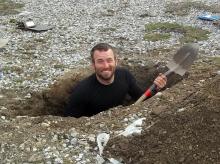Buried Ice in Antarctica 2012
What Are They Doing?
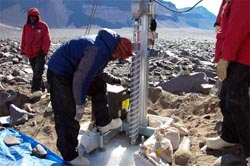 Setting up a drill site in the Dry Valleys, Antarctica
Setting up a drill site in the Dry Valleys, Antarctica
A small team of earth scientists and engineers used a specialized drill to reach buried ice deposits in the Dry Valleys region of Antarctica. Stagnant and/or slow-moving debris-covered glaciers may contain ice several million years in age. By comparison, the oldest ice yet cored from the East Antarctic Ice Sheet is approximately 1 million years old. As a result, these buried ice deposits hold an ancient archive of Earth's past atmospheric conditions. Each ice core enabled the research team to gain access to a reliable record of atmospheric and climatic change extending back for many millions of years, making it by far the oldest ice yet known on this planet.
In addition to drilling for ancient ice, the team worked in the Dry Valleys to seek a better understanding of surface processes that play a critical role in maintaining and/or modifying buried glacier ice. Despite their age and potential to register long-term climate change, there has been surprisingly little research on the geologic and geomorphologic processes that both preserve and modify debris-covered glaciers in Antarctica. In addition, the cold polar desert of the Dry Valleys is one of the most Mars-like climatic environments and landscapes on Earth, serving as a proxy for very ancient ice buried on Mars and providing insight into Martian history and the potential for life on Mars.

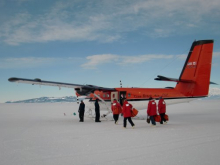

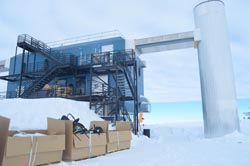 The building that houses the IceCube project
The building that houses the IceCube project

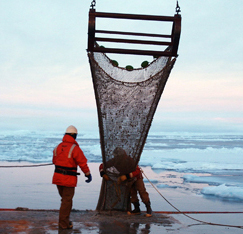 Trawling for organisms off the Antarctic peninsula
Trawling for organisms off the Antarctic peninsula

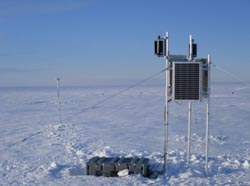 Seismic station on the ice
Seismic station on the ice
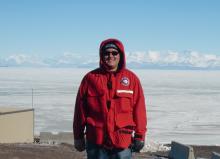
 Glacier outside of Kangerlussuaq, Greenland
Glacier outside of Kangerlussuaq, Greenland
 JSEP Participants from the United States
JSEP Participants from the United States

 The cockpit of a NASA aircraft
The cockpit of a NASA aircraft

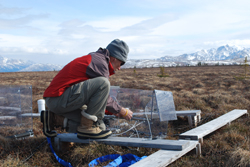 Setting up tundra experiments
Setting up tundra experiments
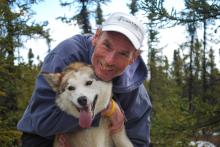
 Raising a Conductivity, Temperature, and Depth (CTD) sensor
Raising a Conductivity, Temperature, and Depth (CTD) sensor
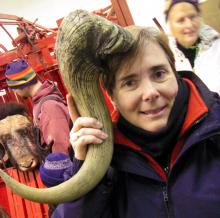
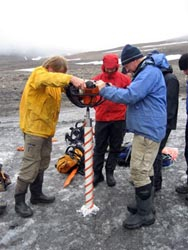 Taking an ice core of a glacier on Svalbard
Taking an ice core of a glacier on Svalbard
